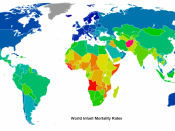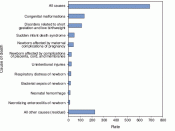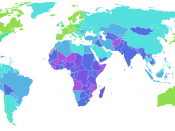The striking beauty of Nepal's landscape stands in stark contrast with the country's wide spread poverty. Landlocked and endowed with few natural resources sustainable for commercial exploitation, Nepal remains one of the poorest and least developed countries in the world with its social indicators one of the lowest in the entire Asia Region. Unlike Australia, whose social welfare system is among the finest in the world, Nepal suffers much from its lack of an organized system of social welfare and adequate health services. Life expectancy at birth in Nepal is 57 years and the infant mortality rate at 82 per 1,000 live births is among the highest in the world. Medical facilities are shockingly incomplete, partly due to the huge skill shortage and Nepal's woefully inadequate transport network - 1 qualified physician has to be shared amongst 12,700 Nepalese. Australia, however, enjoying the advantages of a modified welfare state is very well placed by the standards of the developed world in terms of nutrition, living and working conditions, as well as general rates of life expectancy.
Life expectancy at birth is 81 years and with an easily accessible health care system, infant mortality rate in Australia is 5 per 1,000 live births - only a sixteenth of Nepal's infant mortality rate.
Abundant in natural resources and a major exporter of agricultural and other primary products, Australia has a prosperous Western-style capitalist economy, with a per capita GDP at the level of the highly industrialized European countries - US $21,400. Nepal, on the contrary, lacking in foreign investment interest, hampered by its technological backwardness, its landlocked geographic location and its susceptibility to natural disaster, relies on agriculture as the mainstay of the economy - the GDP per capita in Nepal is alarming at US $210.
Literacy rate in Nepal is appalling...


